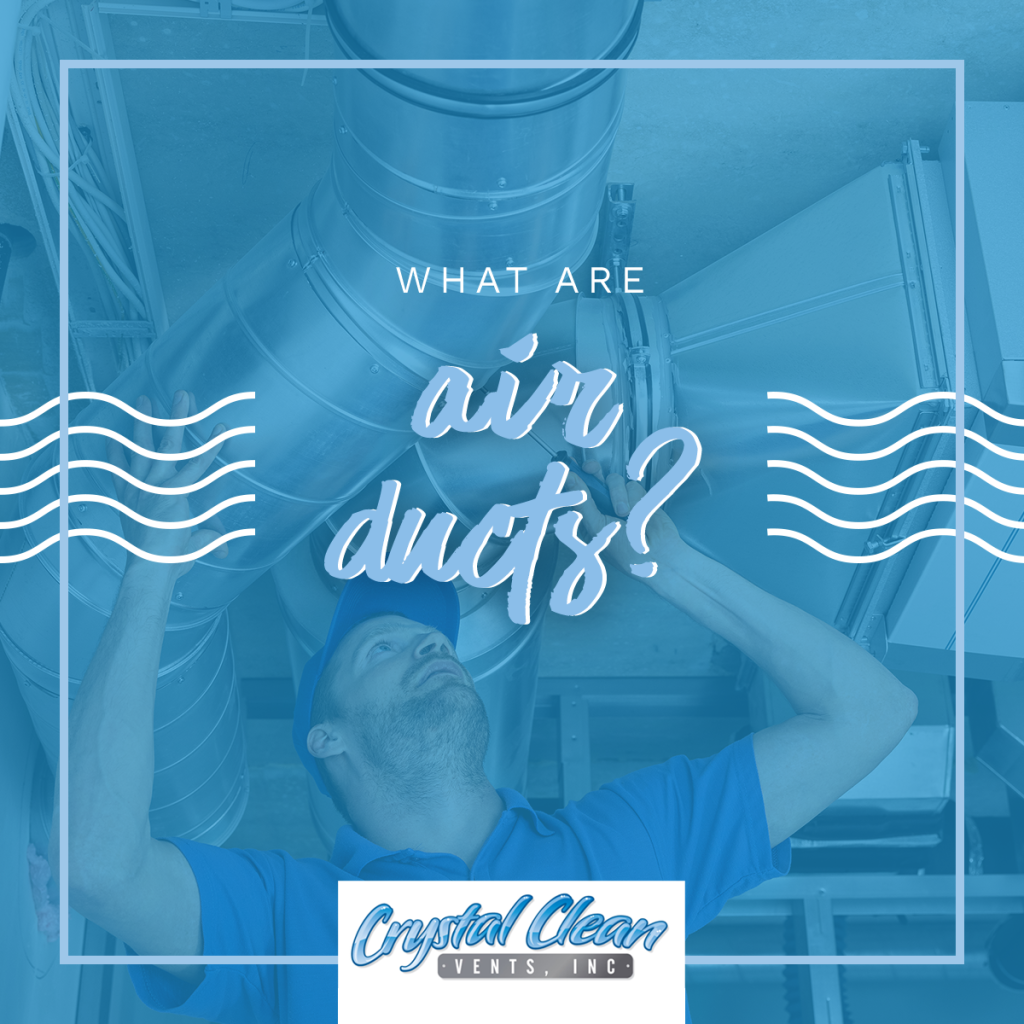March 27, 2025
What Are Air Ducts?

If you’ve ever wondered how your home stays warm in the winter and cool in the summer, the answer is hiding in plain sight—well, actually, it’s hiding in your walls, ceilings, and floors. Air ducts are the unsung heroes of your home’s heating, ventilation, and air conditioning (HVAC) system. They quietly work behind the scenes to distribute conditioned air where you need it most.
Let’s take a deep dive into what air ducts are, how they function, and why they matter. Don’t worry; we’ll keep it light and fun—think of this as an episode of Home Improvement, minus the accidental explosions and Tim Allen grunting.
What Are Air Ducts?
In the simplest terms, air ducts are a network of tubes that transport heated or cooled air throughout your home. They’re like the highways of your HVAC system, ensuring that air travels from Point A (your furnace or air conditioner) to Point B (your various rooms). Without ducts, you’d have to rely on tiny space heaters in each room or constantly carry around a fan from one room to another.
How Do Air Ducts Work?
Your HVAC system—much like a massive set of lungs—constantly circulates air in and out of various spaces. Here’s how the system typically operates:
Step 1: Air Intake: The system pulls in air through return vents.
Step 2: Heating or Cooling: The air passes through either a furnace or an air conditioning unit, where it’s heated or cooled.
Step 3: Air Distribution: The treated air travels through the ductwork and is directed into different rooms via vents.
Step 4: Air Recirculation: Eventually, the air cycles back through return vents to be reconditioned and redistributed.
When everything functions correctly, it creates a seamless loop. However, when things go awry, let’s just say your home could start to feel like a Florida swamp or the Arctic tundra.
Types of Air Ducts
Not all air ducts are the same. Your home likely contains various types of ducts. Let’s take a closer look at them:
Rigid Ducts: These are heavy-duty, no-nonsense ducts usually made of sheet metal or fiberglass. They hold their shape well and are less prone to air leaks. If your home has a solid duct system, it likely uses rigid ducts.
Flexible Ducts: These are like giant slinkies wrapped in plastic. These ducts are lightweight, simple to install, and ideal for areas where rigid ducts won’t fit. However, they’re also more prone to kinks and damage, which can lead to efficiency issues.
Fiberglass Lined Ducts: These ducts have insulation built right into them, which helps reduce noise and improve energy efficiency. However, if not properly maintained, they can trap dust and debris, leading to potential air quality concerns.
Why Should You Care About Your Air Ducts?
Now, you might be thinking, “This is all very interesting, but why does any of this matter to me?” Great question! Here are a few reasons why your air ducts deserve your attention:
1) Energy Efficiency
Leaky or poorly insulated ducts can lead to significant energy loss. In fact, the U.S. Department of Energy estimates that about 20-30% of the air moving through a duct system is lost due to leaks, holes, or poorly connected ducts. That’s like paying for a full tank of gas and only getting three-quarters of it!
2) Indoor Air Quality
Your ducts don’t just move air—they also collect dust, allergens, and even mold if not properly maintained. If you’ve been sneezing more than usual, it might be time to have your ducts cleaned.
3) Comfort Control
Have you ever noticed that one room in your house is always too hot or too cold? Uneven airflow is often caused by blockages, leaks, or improperly designed duct systems.
Common Air Duct Problems (And Their Solutions)
Just like a car, your air ducts need a little TLC to keep things running smoothly. Here are a few common issues and how to fix them:
1) Leaky Ducts
Leaks can occur due to poor installation, aging materials, or even pesky rodents looking for a warm place to hide. The fix? Sealing leaks with mastic sealant or metal tape can significantly improve efficiency.
2) Dirty Ducts
Dust, pet dander, and even the occasional creepy-crawly can find their way into your ducts. A professional duct cleaning every few years can help keep things fresh.
3) Poor Insulation
If your ducts aren’t properly insulated, they can lose heat or gain unwanted warmth, making your HVAC system work harder. Wrapping them in insulation can improve performance.
How to Keep Your Air Ducts in Tip-Top Shape
Crystal Clean Vents can help you maintain the condition and performance of your air ducts. Our experts can assist you:
✔️ Change your air filters regularly—every 1-3 months is ideal.
✔️ Have your ducts inspected for leaks or damage annually.
✔️ Keep vents and registers clean and unobstructed.
✔️ Provide a professional duct cleaning service as needed.
Investing In Your Air Ducts: A Home Improvement Worth Doing
Maintaining the quality and performance of your air ducts is crucial to your home’s comfort, energy efficiency, and air quality. The next time you hear your HVAC system turn on, take a moment to appreciate the unseen network of ducts working to keep your home just the way you like it. If you ever suspect something is wrong, don’t hesitate to reach out to the professionals at Crystal Clean Vents.
Investing in air duct cleaning isn’t just about keeping a clean home; it’s a strategic decision that provides economic advantages and long-term savings. Clean air ducts enhance HVAC efficiency, leading to lower energy bills and decreased energy consumption. Furthermore, regular air duct maintenance can prolong the lifespan of your HVAC system.
Are you ready to enjoy the economic advantages of clean air ducts? Take the first step to a cleaner, more energy-efficient home today! Contact the pros at Crystal Clean Vents. Happy heating and cooling!
Source: https://www.energystar.gov/saveathome/heating-cooling/duct-sealing
